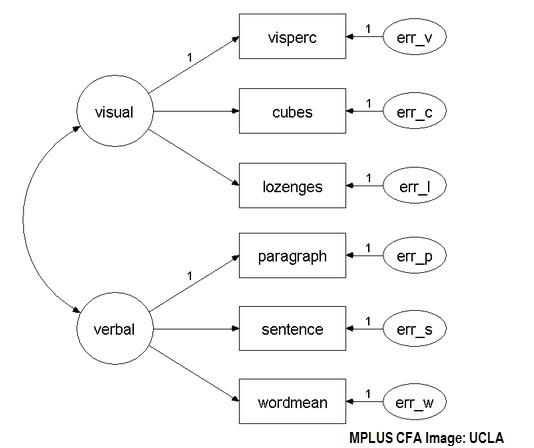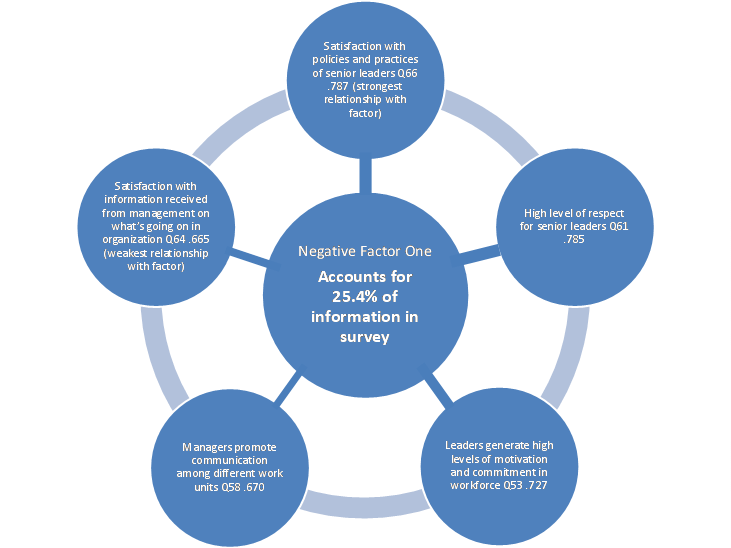Describe a Situation Where You Would Use a Factor Analysis
Can you list 3 difference between the FA and PCA. You can reduce the dimensions of your data into one or more super-variables.

Factor Analysis Easy Definition Statistics How To
The process of performing a regression allows you to confidently determine which factors matter most which factors can be ignored and how these factors influence each other.

. Explain covariation among multiple observed variables by. This is the exact type of analysis that ANOVA is built for. Moreover it is a part of General Linear Model GLM and it believes several theories that contain no multicollinearity linear relationship true correlation and relevant variables into the.
For example the data follows a normal distribution and the population variance is homogeneous. Testing of theory. In this situation it is not legitimate to simply drop the outlier.
Economic factors impact of economic trends taxes or importexport ratios. Describe scenarios where you will use factor analysis or principle component analysis. In order to understand regression analysis fully its.
As an index of all variables we can use this score for further analysis. This allows for comparison of multiple means at once because the error is calculated for the whole set of comparisons rather than for each individual two-way comparison which would happen with a t-test. If the outlier creates a strong association you.
Factor analysis has several different rotation methods and some of them ensure that. Use Regression to Analyze a Wide Variety of Relationships. Much like exploratory common factor analysis we will assume that total variance can be partitioned into common and unique variance.
Include continuous and categorical variables. Lead to different sales. Factor analysis is a form of exploratory multivariate analysis that is used to either reduce the number of variables in a model or to detect relationships among variables.
Assess interaction terms to determine whether the. Use polynomial terms to model curvature. Some Examples of Factor-Analysis Problems 1.
The purpose of factor analysis is to discover simple patterns in the pattern of relationships among the variables. In the above case this is the number of hours spent by students online. Gain insight to dimensions.
The main reasons to apply the nonparametric test include the following. Factor Analysis Factor analysis is a technique that is used to reduce a large number of variables into fewer numbers of factors. For this reason it is also sometimes called dimension reduction.
If you have too many variables it can be difficult to find patterns in your data. For example you can use regression analysis to do the following. Regression analysis can handle many things.
The purpose of factor analysis in business research is to reduce the number of variables by using lesser number of surrogate variables factors while retaining the variability. Can you list 3 difference between the FA and PCA. The most common technique is known as Principal Component Analysis PCA.
Regression analysis is a reliable method of identifying which variables have impact on a topic of interest. At the same time models created using datasets with too many variables are susceptible to overfitting. Model multiple independent variables.
Political factors impact of government policies trading policies or elections. The purpose of factor analysis is to reduce many individual items into a fewer number of dimensions. Researchers are often interested.
It refers to a method that reduces a large variable into a smaller variable factor. ANOVA is used in a wide variety of real-life situations but the most common include. Describe scenarios where you will use factor analysis or principle component analysis.
The F-test compares the variance in each group mean from the overall group variance. All variables involved in the factor analysis need to be interval and are assumed to be normally distributed. Herve Abdi1 The University of Texas at Dallas Introduction The different methods of factor analysis first extract a set a factors from a data set.
In particular it seeks to discover if the observed variables can be explained largely or entirely in terms of a much smaller number of variables called factors. The primary objective is to capture some psychological states of customers respondents that cannot be measured directly. This technique extracts maximum common variance from all variables and puts them into a common score.
Factor analysis Factor analysis is an interdependence technique which seeks to reduce the number of variables in a dataset. Furthermore this technique takes out maximum ordinary variance from all the variables and put them in common score. Most often factors are rotated after extraction.
One Factor Confirmatory Factor Analysis The most fundamental model in CFA is the one factor model which will assume that the covariance or correlation among items is due to a single common factor. These factors are almost always orthogonal and are ordered according to the proportion of the variance of the original data that these factors explain. Understanding the structure underlying a set of measures.
Factor Rotations in Factor Analyses. More commonly the outlier affects both results and assumptions. Generally the application of parametric tests requires various assumptions to be satisfied.
FACTOR ANALYSIS IS VERY USEFUL METHOD FOR ANALYSING SCIENTIFIC DATA PARTICULARLY FOR DATA RELATING TO BIOTECH AND FOOD TECNOLOGY AND ANIMAL BEHAVIOUR ALSOPrincipal component analysis and exploratory factor analysis are both data reduction techniques techniques to combine a group of correlated variables into fewer. Factor analysis is a way to condense the data in many variables into a just a few variables. Factor analysis can be used to simplify data such as reducing the number of variables in regression models.
Mapping variables to latent constructs called factors 2. You may run the analysis both with and without it but you should state in at least a footnote the dropping of any such data points and how the results changed. The identification of significant predictors can help determine the correct intervention to resolve the problem.
Social factors impact of demographics lifestyles or ethnic issues. The underlying data do not meet the assumptions about the population sample. The above example of a research using multiple regression analysis demonstrates that the statistical tool is useful in predicting dependent variables behavior.
Store are often interested in understanding whether different types of promotions store layouts advertisement tactics etc. ANOVA uses the F-test for statistical significance. Technological factors impact of advancing technology or technology legislations.

Factor Analysis Easy Definition Statistics How To

Factor Analysis Easy Definition Statistics How To

Pest Analysis Overview Examples How To Anlayze External Environment
No comments for "Describe a Situation Where You Would Use a Factor Analysis"
Post a Comment